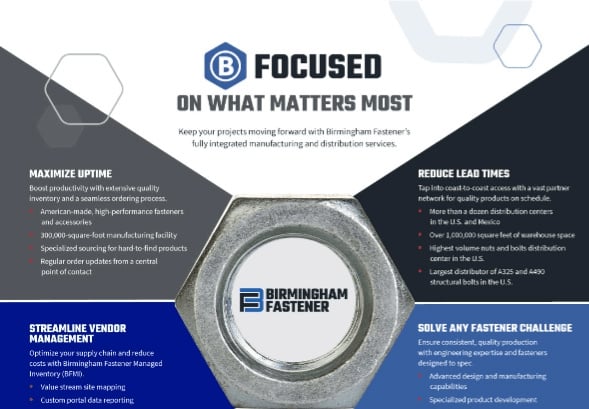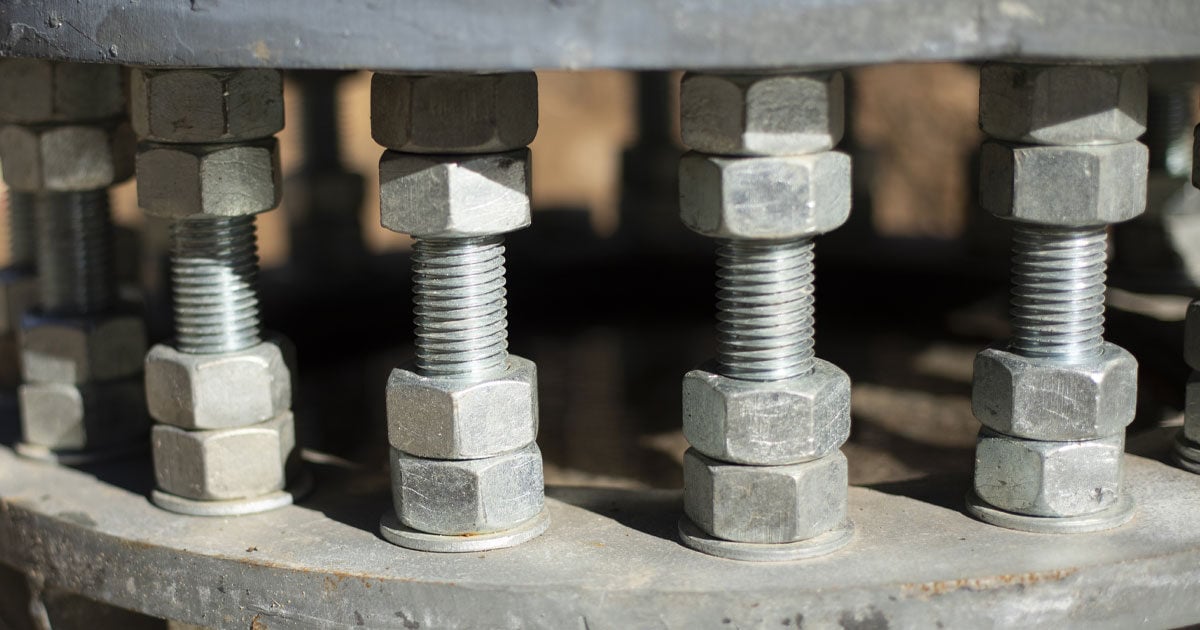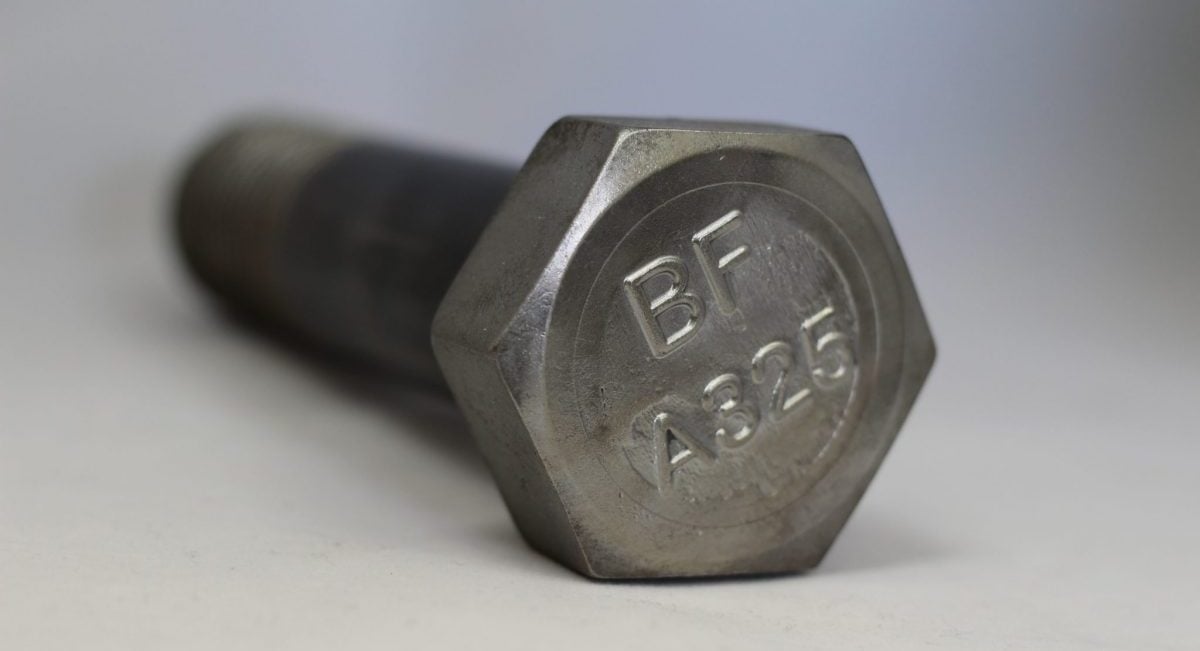Can I Put a Hot-Dip Galvanized Nut on a Mechanical Galvanized Bolt?

We have discussed ASTM A325 coatings and their differences before on our coatings blog. The two types of coating on ASTM F3125 Grade A325 bolting assemblies are hot-dip galvanized and mechanical galvanized (uncoated is also available). Though they may sound similar, they are very different coatings. It is against ASTM standards to mix the two coatings on a single bolting component. Here, we’ll discuss the difference between the two coatings, the issues that would arise when mixing the two, and what the RCSC and ASTM state.
Over-Tapping Hot-Dip Galvanized Nuts
Because hot dip galvanizing produces a thicker coating than mechanical galvanizing, over-tapping the nut is necessary to accommodate the coating’s thickness. To over-tap a nut, the manufacturer increases the nut’s threads slightly in order for the nut to slide onto the bolt easily. Because of this over-tapping of a hot-dip nut, a mechanical galvanized nut would not fit onto a hot-dip galvanized bolt. Also, a hot-dipped nut would be too loose for a mechanical galvanized bolt, as there is not enough thread engagement. This would also increase the torque required to tighten the fastener, and because the threads aren’t properly engaged, you could end up with a bolt assembly that is torqued but not properly tensioned (see our torque v. tension blog).
It is also important to note that you cannot mix uncoated and coated structural bolting components, nor can you mix Type 1 and Type 3 structural bolting components.
The ASTM and RCSC’s Verdict
Mixing structural bolts that are galvanized by one process with nuts that are galvanized by another process are against ASTM F3125 Grade A325 standards. The RCSC states,
“Both the hot-dip galvanizing process (ASTM F2329) and the mechanical galvanizing process (ASTM B695) are recognized in ASTM A325. The effects of the two processes upon the performance characteristics and requirements for proper installation are distinctly different… In accordance with ASTM A325, all threaded components of the fastener assembly must be galvanized by the same process and the supplier’s option is limited to one process per item with no mixed processes in a lot.” - RCSC 2.3.3

The Power of Finding the Right Partner

Focus on What
Matters Most
Related Posts

Structural Bolts: Evaluating Galvanized vs. Non-Galvanized

A325 Bolts vs. A490: What is the Difference?




